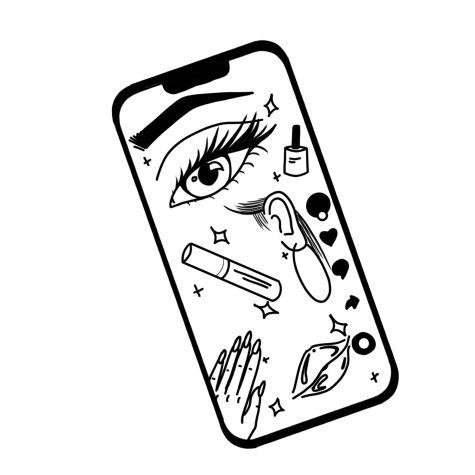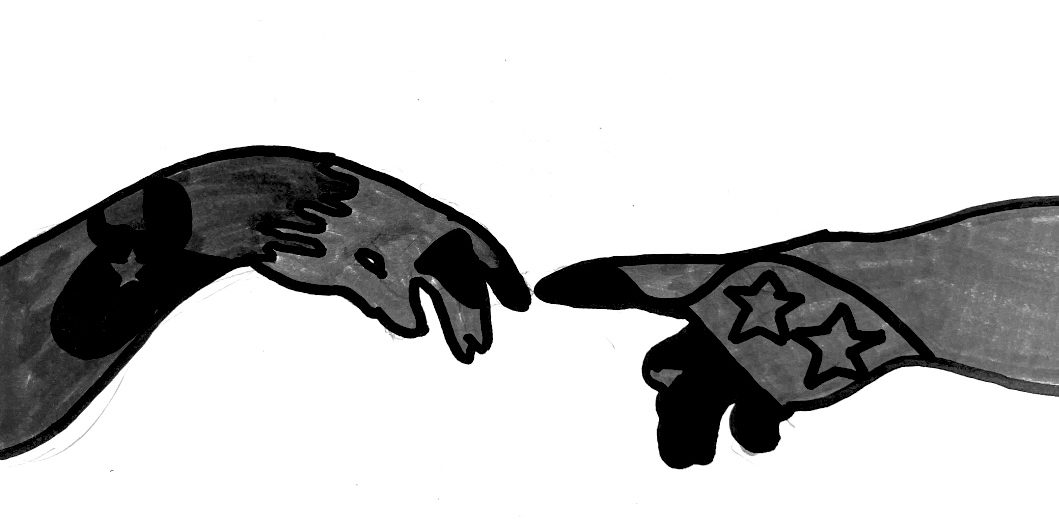In 2018, Emma Chamberlain captured the audience of teenage girls, paving the way for the trend of the modern day social media “it girl.” By showcasing her naturally quirky personality and documenting her travels around the world, Chamberlain’s videos became a staple in the lives of many teenage girls. In 2021, thousands of teenagers watched Hannah Meloche drop out of college, move to Hawaii spontaneously with her friends and live the life that many wish for. Setting the bar high for the life of a 21-year-old, Meloche’s comments were filled with statements such as, “You are living my dream life.” In 2023, you simply cannot go to Sephora without hearing a teenage girl saying, “Alix Earle uses this mascara, it must work,” or “Would Alix buy this?”
The cycle of idolizing internet personalities is never-ending. By setting a likable personality and sharing highlights of their lives, many female influencers have set a standard that many teenagers hope to follow. Although they are fun to watch, the constant cycle of having an “it girl” is toxic, as it reduces originality and is often unattainable.
When people rigorously follow the actions of an influencer, it takes away a sense of individuality. Products recommended by TikToker Alix Earle have been selling out of stores almost as fast as she can recommend them because people will buy anything she suggests in hopes of looking exactly like her.
Additionally, the ideal “it girl” usually lives a life that is impractical and expensive. Going on a week-long trip to Hawaii for “work” or casually wearing a $900 sweater to class is not part of an average lifestyle, let alone one of a teenager. Seeing people similar to your age doing things like this can make one feel bad about themselves and their life choices. While it’s fun to watch, it is not a good influence on the wellness of others.
Furthermore, “it girls” are almost exclusively young, thin white girls. When only having white role models, there is a lack of representation for those of different ethnicities. When teenage girls see someone who perfectly fits the Eurocentric and exclusive beauty standards on their social media feed, it can deteriorate their self-esteem. As teenagers, we are so easily influenced that it can be simple to believe you have to dress, act or look a certain way just because it’s all you’ve seen online. The January 2023 Bark survey said that 48 percent of Redwood students follow at least one “it girl,” and 43 percent compare themselves to them. According to “Her Campus,” a magazine by female college students, “[It girl culture] teaches and preaches that in order to be productive and seen as ‘put together’ you have to be rich, skinny and worst of all, white. To make social media more inclusive, we need to make trends more inclusive and representative of all people, especially women. If you see this trend, instead of getting discouraged, post your own spin on it and start to normalize and celebrate all types of life and beauty.”
Nonetheless, “it girls” provide a chance for women to shine in the media. By gaining fame and celebrity status overnight, it can be easy for these influencers to be motivated by positive attention and financial gains. It can also be nice to watch a video or two on an influencer’s trip to Hawaii as a break from studying. However, just because it is good entertainment doesn’t mean that it isn’t harmful.
Being an influencer also comes with the burden of always having to be “perfect” due to constant surveillance from the media and fans. When someone is put so high on a pedestal it can become hard for them to be held to the same standards as the average person. Just a few months ago, TikToker Alix Earle was deemed “canceled” on social media for posting a photo of a flag supporting former president Donald Trump. She posted this photo in early 2020, yet three years later people on the internet still ripped her to shreds for having beliefs that differed from their own. These women are expected to always look good, act mature and post their lives for millions on the internet to see daily, which creates an unattainable standard for influencers. Thus, the “it-girl” perpetuation has negative effects on both the influencers and the committed viewers.

By this time next year, the internet will likely have already moved on from the current “it girl.” There will be a new thin, white and rich 20-something-year-old for people to criticize constantly and base their lives off of. The now Alix Earle was once Emma Chamberlain, and this cycle will continue. If we want to retain our originality and feel better about our lifestyles, we need to deconstruct the norm of putting an influencer high on a pedestal to mirror and follow their every move.







